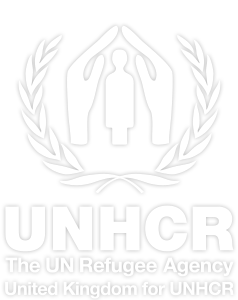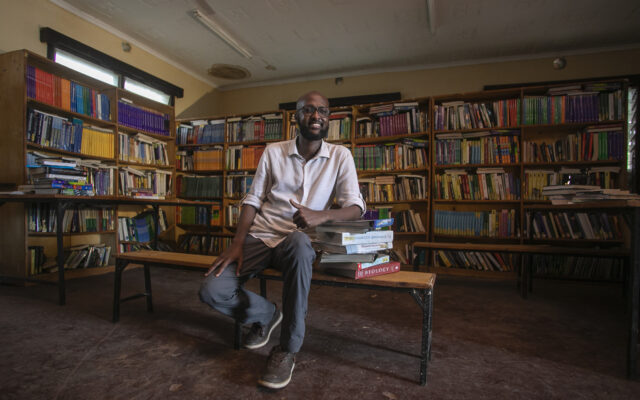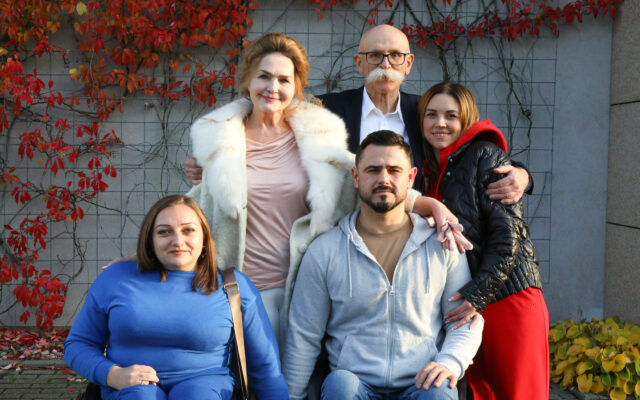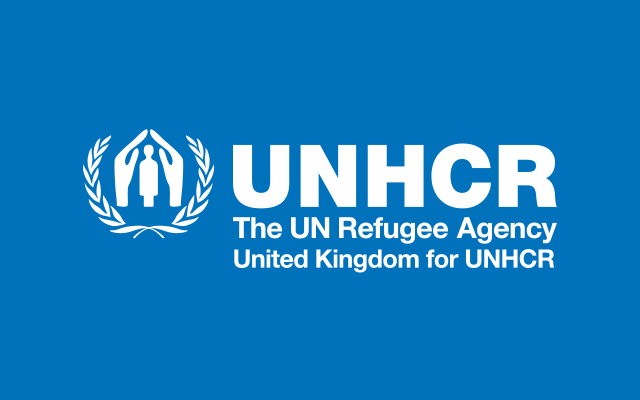With photographs, words, and deeds, Rohingya refugee storytellers weave hope from despair
20.12.23
The 2023 UNHCR Nansen Refugee Award Regional Winners for Asia and the Pacific (from left to right) Sahat Zia Hero, Salim Khan, Shahida Win, and Abdullah Habib.
Standing on a red brick road at the crest of a shack-covered hill in Kutupalong refugee camp, Sahat Zia Hero can see in the distance the mobile phone mast and tallest trees of his village, over the border in Myanmar.
Sometimes he walks to the camp’s perimeter fence and inhales deeply, hoping to breathe the air of home, a place he was forced to flee six years ago when his village was burned and he fled the country along with hundreds of thousands of other Rohingya.
“It’s very hard that my home, my village is very close to me, and I can’t get there,” he said with tears in his eyes. “Sometimes I walk there in my mind.”
Were the 33 camps that make up Kutupalong and two other settlements in Cox’s Bazar a city, it would be the fifth most populous in Bangladesh, with some 930,000 refugees spread across 24 square kilometres of once-forested hills sandwiched between the Bay of Bengal and the Naf River that forms the border with Myanmar. Kutupalong is a place where stories linger behind every doorway, down every path, and in every marketplace.
Zia and his peers Abdullah Habib, Mohammed Salim Khan and Shahida Win are refugee photographers who find and tell those stories to the world. The Rohingya exodus of 2017 triggered global attention and humanitarian support, but six years later international focus has shifted to other crises and conflicts. The Rohingya people feel forgotten, but this foursome is dedicated to reminding the world of their plight through storytelling. This commitment has led to their recognition as the 2023 regional winners for Asia and the Pacific of the UNHCR Nansen Refugee Award.
“Our stories show that we exist,” said Shahida. “And we have to tell our own stories, because we are the ones who know them the best.”
Telling their own stories
Life is tough in Kutupalong. Residents have limited access to livelihood opportunities and education and most live in cramped shelters made of bamboo and tarpaulin. Funding cuts this year mean food allowances have shrunk from $12 to $8 per person per month, deepening the hardship.
Salim was born in Kutupalong to refugee parents who arrived during an earlier influx, but Abdullah, Shahida, and Zia knew life in Myanmar before years of discrimination culminated in violent attacks on Rohingya villages across Rakhine state in 2017. Many hundreds were killed and over a million people were forced to flee their homes. Abdullah, Shahida, and Zia found themselves refugees, like Salim. “We lost everything, even our country,” said Abdullah.
As refugee life took shape in Cox’s Bazar, the four photographers began gathering the stories they found around them and using their smartphones and basic cameras to share images on social media. Between them, they have produced photography magazines, had their images published in the international media, won awards, participated in exhibitions, and gained thousands of followers. Though they did not initially know one another, they shared an understanding that no one else would tell their stories for them.
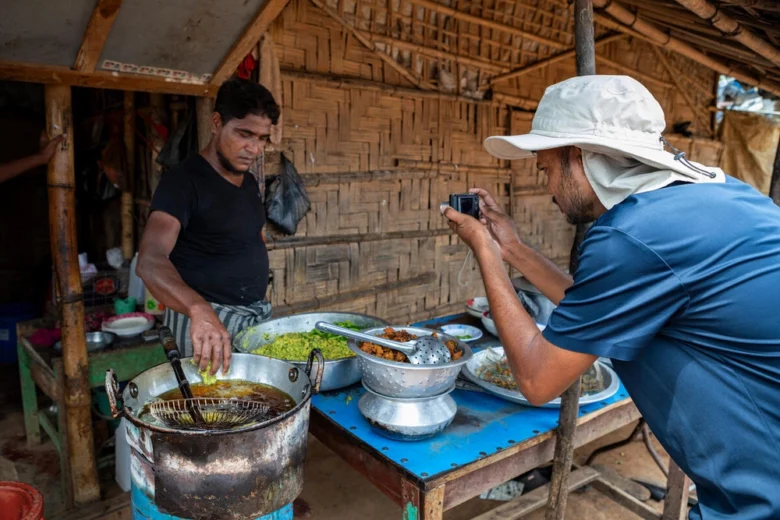
Salim Khan photographs a Rohingya man preparing food. © UNHCR/Susan Hopper
“My aim is to document the challenges we face, and to tell stories that benefit my community,” said Salim.
“We don’t want to be a forgotten community. I want people around the world to see the Rohingya people as human beings, like everyone else,” said Zia, who seeks to capture “the hope, the challenges, and the sadness, so people can learn about the Rohingya people from the Rohingya people.”
“If we do not speak out, if we don’t raise our voices, if we don’t stand for our rights, then nothing will happen and we will live our lives this way,” Abdullah said.
Constrained by cultural norms and traditions, the stories of Rohingya refugee women have remained largely hidden. Shahida’s courageous photography and poetry gives them a voice. It is, she said, a calling: “It was not my choice. If I do not convey these messages to the outer world, who will do it?”
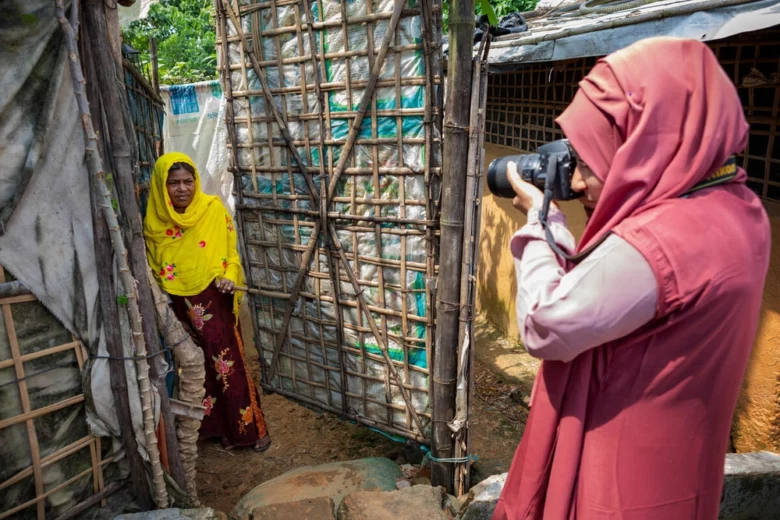
Shahida Win photographs a Rohingya woman in Kutupalong refugee settlement. © UNHCR/Susan Hopper
In addition to amplifying Rohingya voices through their own work, the four conduct workshops to train others. They have expanded the community of refugee storytellers able to use film, photography, and poetry to express themselves and share crucial information on public health and how to respond to the fires and floods that regularly affect the camp.
What motivates these young photographers and storytellers is a desire to seize the world’s attention, to portray the lives of their fellow refugees truthfully and with empathy, and to bring about change for the Rohingya. Their desire is heartfelt, and very personal. “I am the person who has never, ever seen Myanmar,” said Salim. “I don’t want my kids to live their whole lives in a refugee camp.”
Stateless storytellers: the Rohingya refugee photographers
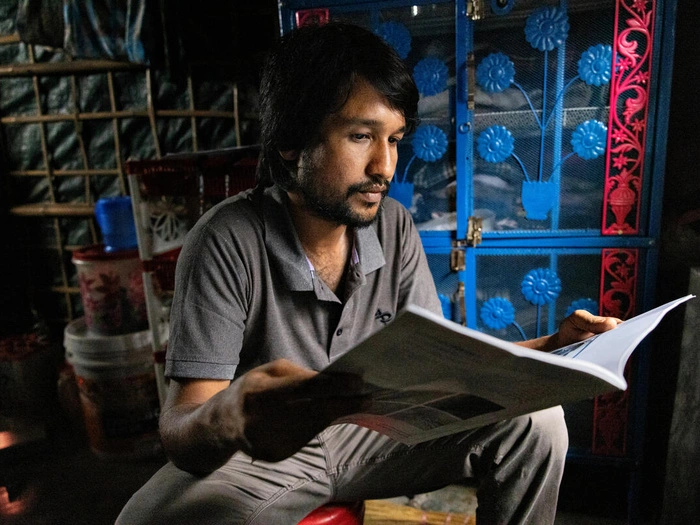
Abdullah Habib looks through a photo publication containing his work at his home in Kutupalong refugee settlement. © UNHCR/Susan Hopper
Abdullah Habib
Abdullah, 29, fled Myanmar in 2017 and shares a shelter in Kutupalong refugee camp with his wife and son, his parents, and his four brothers. A photographer and documentary filmmaker, he was a recipient of the inaugural International Art Contest for Minority Artists in 2022.
- Instagram: @abdullah_photography_7
- Facebook: https://www.facebook.com/HabibGlarryLink is external
- X: @Abdulla_AH7
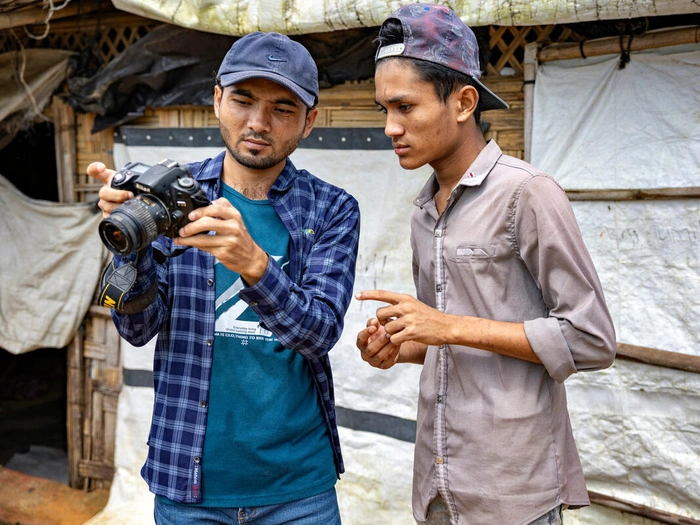
Sahat Zia Hero (left) mentors Rohingya youth, Mohammed Hassan. © UNHCR/Susan Hopper
Sahat Zia Hero
Zia, 29, fled Myanmar in 2017 and lives in Kutupalong with his wife and two children. He is a documentary photographer, photography teacher, and the founder and editor of Rohingyaphotographer Magazine, the third issue of which is now in production.
- Instagram: @ziahero
- Facebook: https://www.facebook.com/zia.arakani/Link is external
- X: @sahatzia_hero
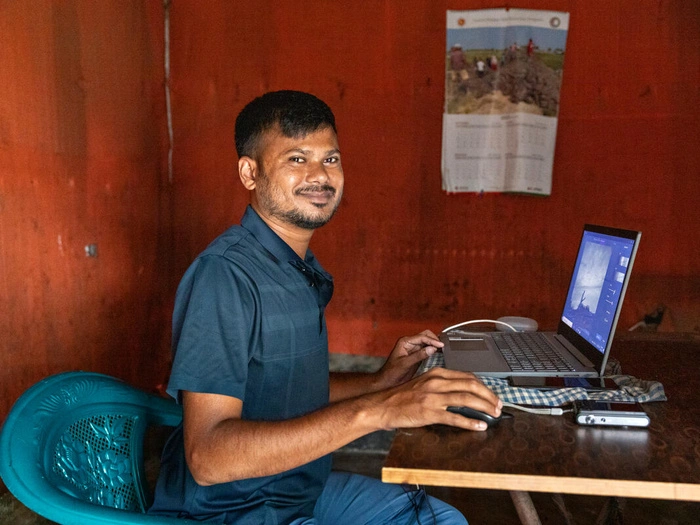
Salim Khan edits photos on his computer at his home in Kutupalong refugee settlement. © UNHCR/Susan Hopper
Mohammed Salim Khan
Salim, 31, was born in Kutupalong to parents who had fled earlier violence in Myanmar and lives with his wife and three children. He is a photographer, volunteer firefighter, and disaster emergency trainer, helping his fellow refugees respond to the fires, floods, and mudslides that make life in the camps even more precarious.
- Instagram: @mohammed_salimk
- Facebook: https://www.facebook.com/mohd.brr/Link is external
- X: @Rohingyasalimkh
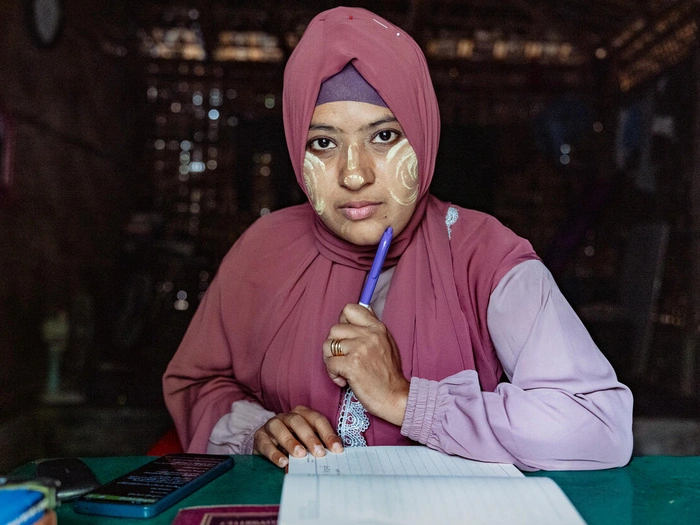
Shahida Win writes poetry at her home in Kutupalong refugee settlement. © UNHCR/Susan Hopper
Shahida Win
Shahida, 27, fled Myanmar in 2017 and lives in Kutupalong with her mother and brother. She is a photographer and poet whose storytelling focuses on women’s experiences and female empowerment. In 2023, she performed her poetry at the annual Dhaka Lit Fest in the Bangladeshi capital.
- Instagram: @winshahida
- Facebook: https://www.facebook.com/shahida.win.7Link is external
- X: @ShahidaWin2
